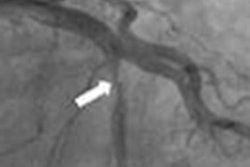Dear Advanced Visualization Insider,
Social anxiety disorder is one of the most common anxiety disorders. To help screen young adults who might not be aware of having high social anxiety, researchers from South Korea have utilized radiomics features on functional brain MRI exams and a machine-learning algorithm to predict high or low social anxiety with a promising level of performance.
Our coverage is the subject of this edition's Insider Exclusive.
Meanwhile, texture analysis of CT pulmonary angiography images could help clinicians assess the prognosis of patients with acute pulmonary embolism, according to a new study. German researchers found significant associations for a few texture features with outcomes such as mortality and the need for admission to the intensive care unit.
In-stent restenosis can be better identified on coronary CT angiography with use of a deep learning-based reconstruction method and a two-breath-hold subtraction technique, researchers from China have concluded.
Surgeons in the Netherlands recently successfully implanted the first 3D-printed titanium lower jaw in a patient with head and neck cancer. The new type of 3D-printed mandible was created from the patient's MRI and CT scans.
CT-based body composition analysis on routine PET/CT staging exams could be used to opportunistically monitor patients with neuroendocrine tumors (NETs) of a gastroenteropancreatic origin, potentially obviating the need for dual-energy x-ray absorptiometry or bioelectrical impedance analysis in these patients.
X-ray-like images can be created by an artificial intelligence (AI) algorithm from ultrasound data according to a group from China. The method could decrease radiation exposure in children at risk for adolescent idiopathic scoliosis.
Improvements in advanced visualization for CT -- such as providing 3D needle guidance, 2D fluoroscopy, and real-time image registration -- are among the developments expected for the modality in the coming years, according to a presentation at ECR 2022 in Vienna. In addition, CT radiomics and a machine-learning algorithm can perform well for classifying renal cysts.
In neuroradiology, AI can improve quantitative imaging, triage, and image reconstruction, according to a talk at AHRA 2022. And using a safety checklist to wrap up an image-guided procedure can significantly reduce the number of adverse events and the need for repeat procedures.
Is there a story you'd like to see covered in the Advanced Visualization Community? Please feel free to drop me a line.




















